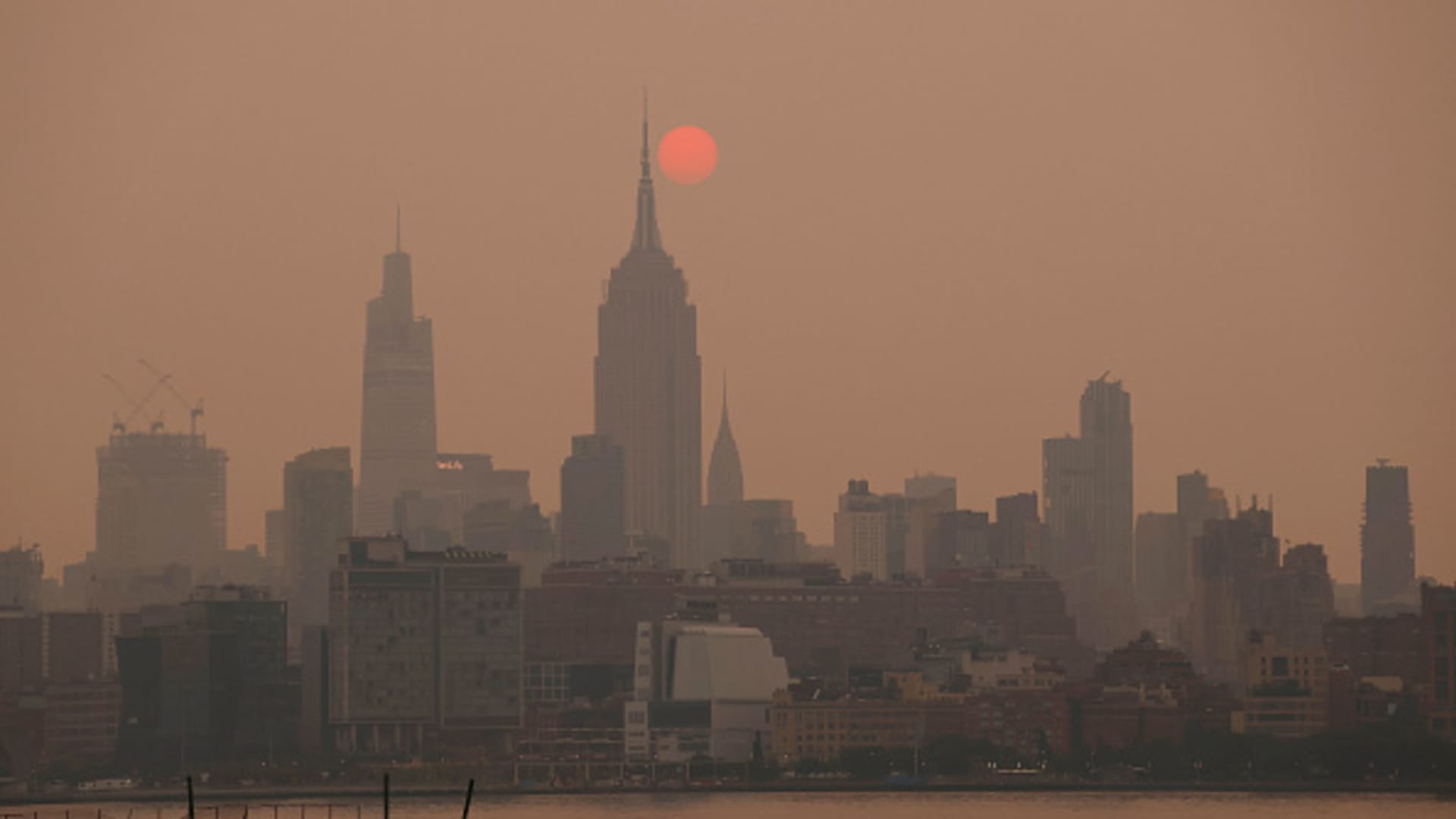New York City has some of the worst air quality in the country this week because of smoke that has drifted south from wildfires burning in Canada.
The ratings for air quality levels across the five boroughs reached into the 150s Tuesday, according to the U.S. government online platform AirNow. Those levels are considered unhealthy for all people and significantly above exposure recommendations from the World Health Organization.
The sky over the city had an orange glow Tuesday morning and the sun was largely obscured by a smoky haze. Officials warned residents to limit time outdoors and emphasized people with respiratory illnesses or heart disease are especially vulnerable to the dangerous air quality conditions.
The New York State Department of Environmental Conservation issued an air quality health advisory Tuesday for New York, Bronx, Kings, Queens and Richmond counties and the surrounding suburbs.
Millions of people across the Midwest are also experiencing dangerous air quality conditions this week, with air quality advisories in effect in southeastern Minnesota, parts of the Upper Peninsula of Michigan and areas in Wisconsin. Air quality alerts have also been posted across most of New England.
Canada is set to experience its worst-ever wildfire season as blazes are forecast to continue through August, officials said Monday. There are currently 413 active wildfires across nearly all Canadian provinces and territories, and roughly 26,000 people are under evacuation orders. Federal officials said last week that wildfires have burned more than 6.7 million acres.
Wildfires release a significant amount of pollutants into the atmosphere. The smoke generated from wildfires contains fine particulate matter, called PM2.5, which enters the lungs and causes health issues such as asthma and bronchitis.
Climate change is increasing the frequency and intensity of wildfires and prompting longer seasons in Canada. Rising temperatures and prolonged periods of drought have made the region more vulnerable to wildfires.
Air pollution from wildfire smoke is also growing worse in the U.S. Last year, Stanford researchers found millions of Americans are routinely exposed to pollution from wildfire smoke at levels rarely seen just a decade ago.
Cities in the western U.S., where climate change has driven worsening heat waves, drought and wildfires, rank among the highest polluted areas for PM2.5 pollution, according to a report published by the American Lung Association earlier this year.




